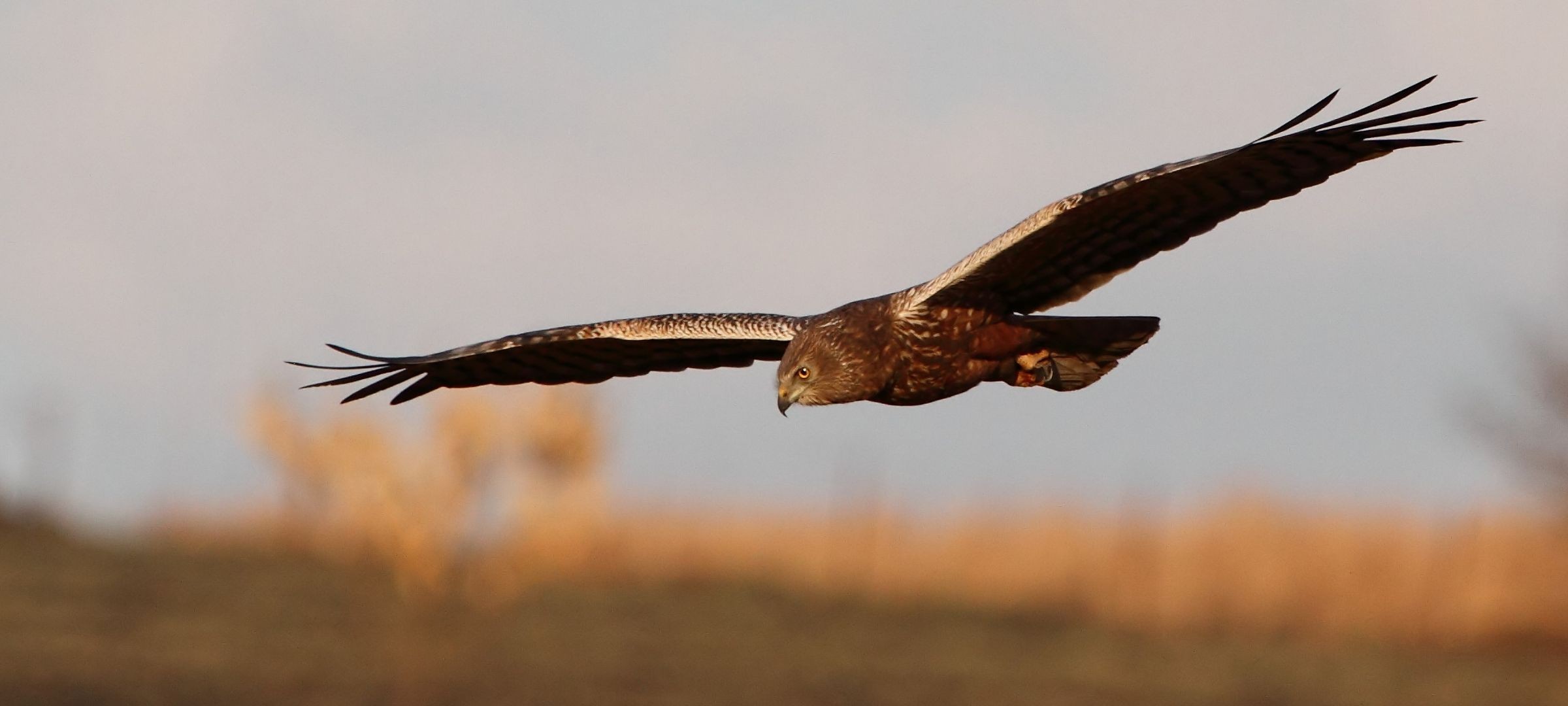African Marsh Harrier
A species of Harriers Scientific name : Circus ranivorus Genus : Harriers
African Marsh Harrier, A species of Harriers
Botanical name: Circus ranivorus
Genus: Harriers
Content
Description General Info
 Photo By Alandmanson , used under CC-BY-SA-3.0 /Cropped and compressed from original
Photo By Alandmanson , used under CC-BY-SA-3.0 /Cropped and compressed from original Description
The adult is 44–47 centimetres (17–19 in) long, with females being about 30% heavier than males (Simmons and Simmons 2000). Adults, (like the male bird right) have yellow eyes, but brown eyes when immature. Both sexes are mostly brown with pale streakings on the head, breast, forewing and rufous on the thighs and the belly. Adult males differ from females in that they have a pale grey wash to the dorsal secondaries and primaries. The female's are brown. The juvenile is dark brown and may have a pale breastband and pale markings on the head. The tail and flight feathers have dark barring at all ages, but this is rarely visible in the juvenile birds. It resembles a small Eurasian marsh harrier but is slimmer and paler brown. It could be mistaken for an immature Montagu's harrier or pallid harrier, but the African marsh harrier can be readily distinguished from them by its lack of a white rump. It is usually silent but the male has a high-pitched, two-note display call, and only the female has the far-carrying pseeew-pseeew food and copulation call during breeding. 
Size
49 cm
Nest Placement
Ground
Feeding Habits
African Marsh Harrier primarily consumes small rodents, birds, nestlings, eggs, frogs, insects, and occasionally carrion, reptiles, and fish. Utilizing a unique hunting strategy, african Marsh Harrier flies upwind 5-20 meters above ground, alternating between hovering, swift turns, and fast sweeps to surprise and capture prey.
Habitat
The african Marsh Harrier primarily inhabits extensive marshes with dense reedbeds, such as those dominated by Typha and Phragmites species, and frequents adjacent open grasslands and croplands for foraging. Typically distributed across a range of elevations from lowlands to high altitudes, it is most commonly found above 1500 metres in East Africa. The habitat of african Marsh Harrier extends to regions with altitudes reaching up to 3000 metres, and in some areas like Ethiopia, it can be found at exceptional heights of around 4000 metres.
Dite type
Carnivorous
General Info
Feeding Habits
Bird food type
Distribution Area
Circus ranivorus is mainly resident in the moister regions of southern and eastern Africa, from the Western Cape northwards through eastern South Africa, Lesotho, Swaziland, eastern Zimbabwe, south and western Mozambique, Malawi, southwestern Tanzania, western and central Zambia, south eastern Angola into northern Botswana, especially in the Okavango Delta, and north eastern Namibia. Disjunct populations occur in northern Tanzania, another two in the south of Democratic Republic of Congo, another in eastern Democratic Republic of Congo, Rwanda and south eastern Uganda; and the northernmost in north western Kenya, far north Uganda and South Sudan. 
Species Status
African marsh harriers are reported to be common at many wetland sites in both eastern and southern Africa, especially in Uganda, Botswana and Zambia. In South Africa, an estimated 3,000-6,000 pairs remain, but some populations are declining and the species is regarded as regionally endangered. Outside South Africa there are still large areas of suitable habitat, e.g. the Okavango Delta in Botswana and over much of Zambia, and the species is still locally common . The population is preliminarily estimated to number between 10,000–100,000 individuals. Populations are declining due to drainage and damming of wetland habitats, over-grazing and human disturbance and, possibly, pesticide poisoning. 